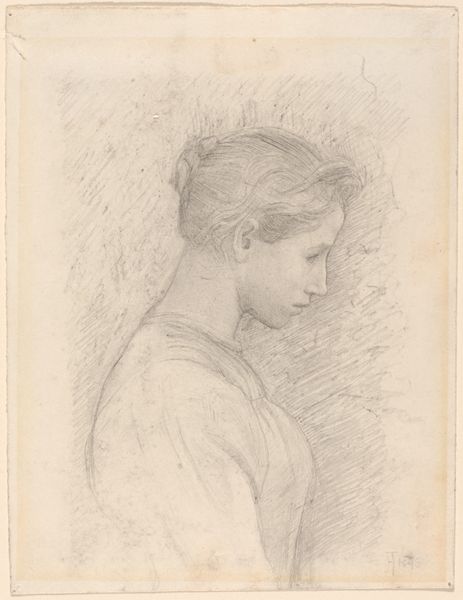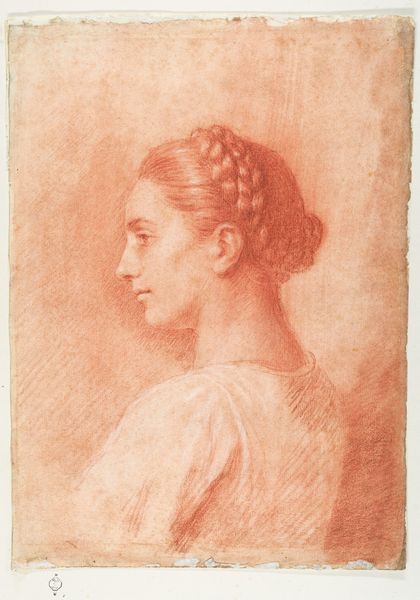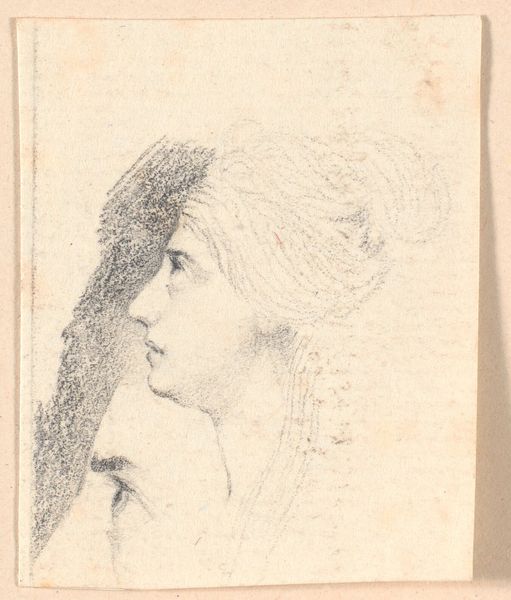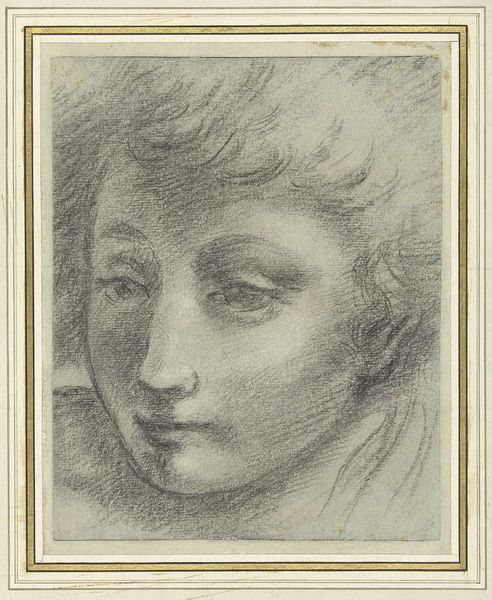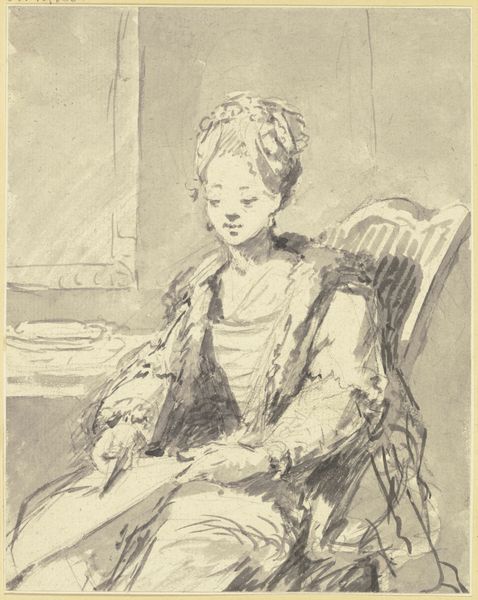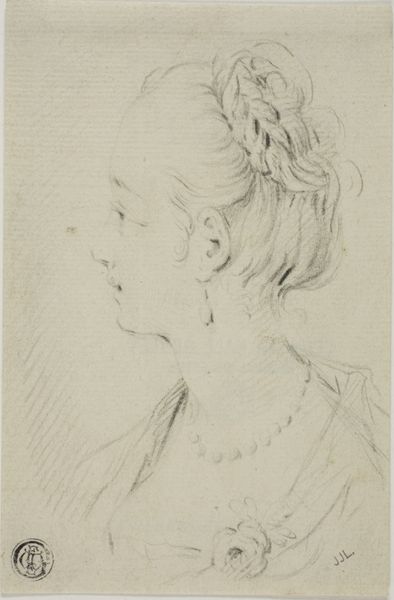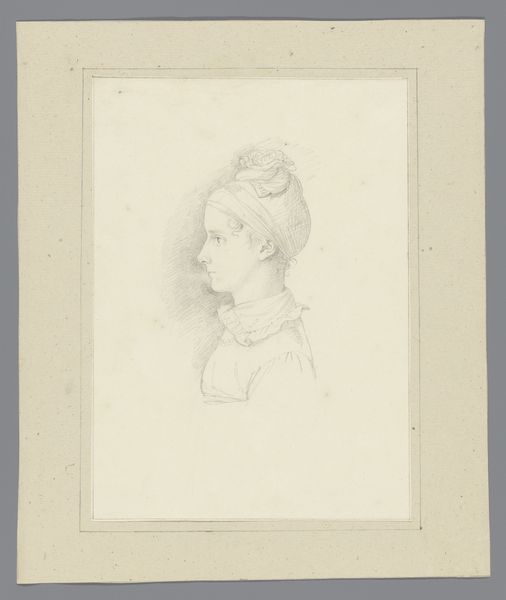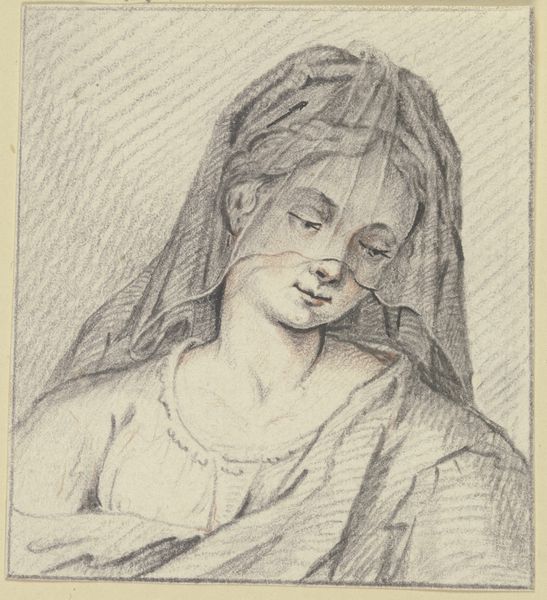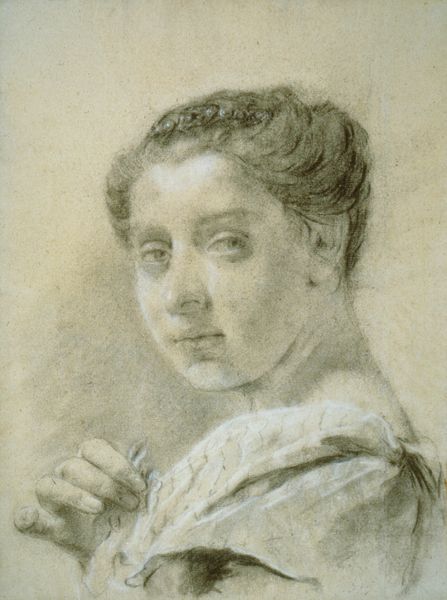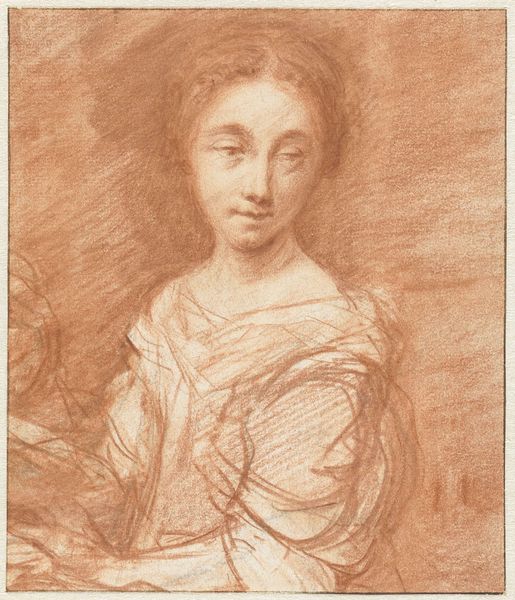
drawing, paper, pencil, chalk
#
portrait
#
drawing
#
paper
#
classicism
#
pencil
#
chalk
Copyright: Public Domain
Curator: Here we have Jean-Pierre Saint-Ours' "Portrait of a Young Woman," created around 1781. It's a captivating drawing, skillfully rendered in pencil and chalk on paper, now residing here at the Städel Museum. Editor: There’s a quiet melancholy to her downcast gaze. I immediately notice the soft hatching and the implied texture of the fabric. Curator: Indeed, the subject's averted gaze carries a weight. The late 18th century was, of course, a period of enormous social and political upheaval, particularly in France leading up to the Revolution. To see such introspective reserve in a woman of this era, captured by an artist moving within those circles, speaks to a complexity often overlooked in depictions of women at the time. It hints at the suppression of individual agency that upper-class women had to navigate within patriarchal structures. Editor: It's fascinating how Saint-Ours achieves such depth with a relatively limited palette. The gradation from light to shadow, the modeling of her cheek, the fall of light on her hair – it's all done with incredible efficiency and control. I wonder about his process...was this drawn from life? Curator: Considering his style and classical interests, the precision suggests preparatory work from life followed by idealization. Notice how the crispness of the lines creates a kind of tension, a pull against the softer modelling. Saint-Ours may have been interested in how women had the ability to either meet, or shy away, from the intense pressures of feminine standards. The use of classical elements in her aesthetic reinforces these expectations and alludes to an oppressive system that requires specific and intentional navigation by the young woman depicted. Editor: Yes, and structurally speaking, the tight cropping adds to this sense of confinement. It almost feels claustrophobic, as if her inner life is the only space available to her. The drawing as a portrait holds formal and historical significance for a woman within such restrictive environments. Curator: Precisely. We see not merely a portrait, but a statement on womanhood and resistance, of class, expectation, and resilience. Editor: After some reflection, I'm appreciating the balance achieved by the artist and how he was able to extract such feeling. Curator: A testament to the power of art in unveiling history that cannot be dismissed from contemporary discussions about gender, power and art.
Comments
No comments
Be the first to comment and join the conversation on the ultimate creative platform.
